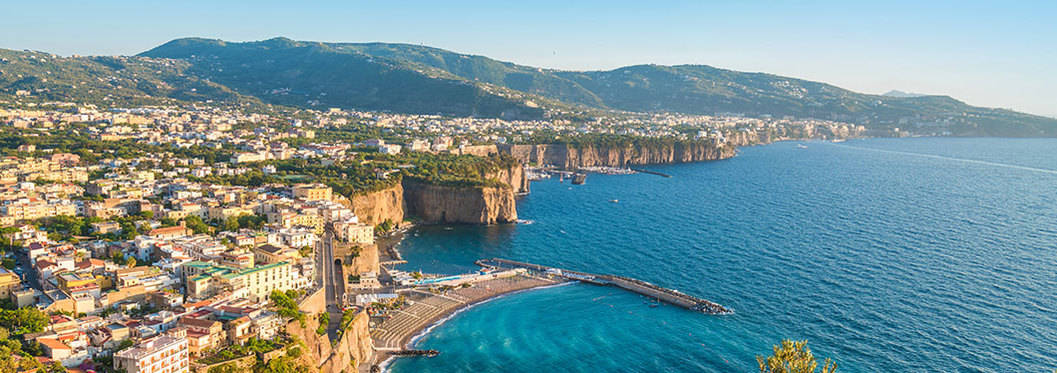
Amalfi Coast
The Amalfi Coast is a 50-kilometre stretch of coastline, between the port of Salerno and the clifftops of Sorrento. All the towns of the Amalfi coast are connected by the scenic SS.163 road, which follows the natural route of the coastline and winds past many towns and villages – all with their own unique character and appeal.
Amalfi is one of the larger towns along this coastline, with its picturesque, whitewashed houses and the beautiful Cathedral of St. Andrew. Or, if you prefer somewhere quieter, try the nearby village of Atrani, situated at the mouth of the Valle del Dragone or Praiano, with its narrow streets, terraced gardens and typical Italian houses.
Positano is perhaps, the best-known village of the Amalfi coast with its gorgeous views, beautiful sandy beach, busy seaside bars, fancy boutiques and brilliant night-life. Another favourite is Ravello, with its picture-postcard scenery, religious buildings a-plenty and the home of the famous annual Ravello Music Festival.
There are so many other places of interest along the Amalfi Coast, but two that are particularly popular are Cetara – an active fishing port and Fiordo di Furore, the only fjord in Italy.
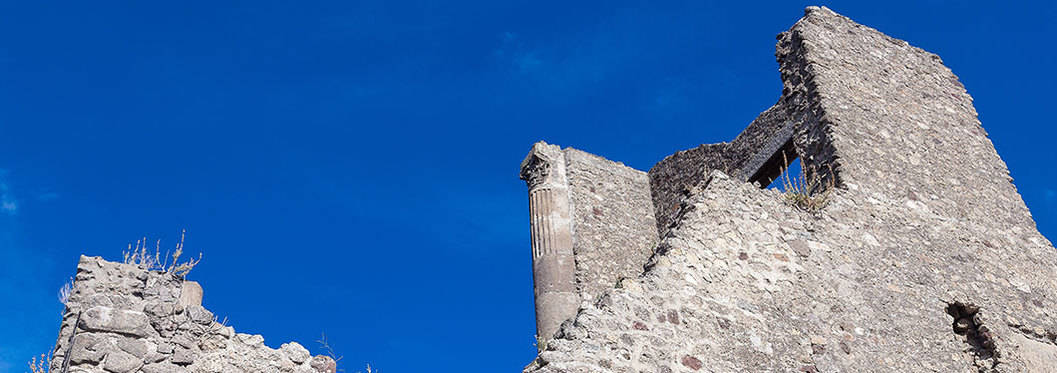
Ancient City Walls
The ancient walls of Sorrento date back to its Greek origins, but were rebuilt in Roman times in order to defend the city from attacks and invasion by the Saracens. The walls completely surrounded the town and had five entrance gates – two facing the sea and three facing inland.
Towers were also built to defend two of the doors: Porta di Marina Grande (Large Coastline Gate), and Porta Piazza Tasso (Tasso Square Gate). These walls were later rebuilt and strengthened between 1551 and 1651. Today, they stand as a popular attraction for those interested in history and archaeology.
Within the walls are numerous buildings which capture the various eras of Sorrento, including monuments such as the fourth century BC Greek Gate, a round, arched gateway built from square cut blocks of stone, blending perfectly with the walls on either side of it. Walking along Via Degli Aranci, you will appreciate the size and stature of the walls, and if you then turn down Via Sersale, you will see the recently renovated Bastion of Parsano – part of the ancient walls.
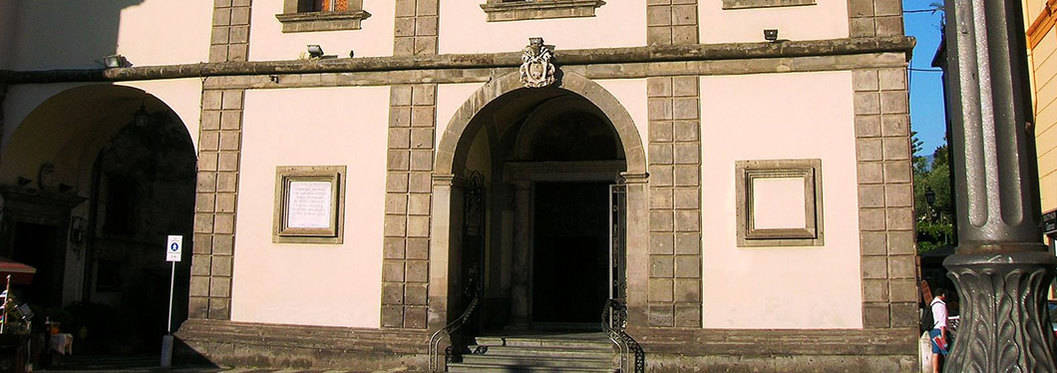
Basilica di Sant’Antonino
Basilica di Sant’Antonino is named after Sorrento’s patron saint, and is the oldest church in this beautiful town. Originally built in the 11th century, numerous changes have been made over the years, including the addition of a baroque interior and Renaissance facade and bell tower.
Image source: Wikimedia Commons. Copyright: Mentnafunangann
Inside the church, you can see the gilded ceilings, valuable paintings by Giovanni Bernardo Lama and a splendid painting by Giacomo Del Po, from 1687, plus various Roman artefacts. In the lobby at the front of the church, there are two ginormous whale ribs displayed, as a reminder that St. Antonio performed many miracles, including rescuing a small child from a whale’s stomach. The saint’s bones now lie in the church’s crypt, alongside hundreds of silver medallions; many of them votives from shipwrecked sailors.
Basilica di Sant’Antonino is a beautiful sight to visit, however, do remember to dress appropriately for your trip here. Shoulders should always be covered, and long trousers (not shorts) are essential when entering churches and other religious venues in Italy.
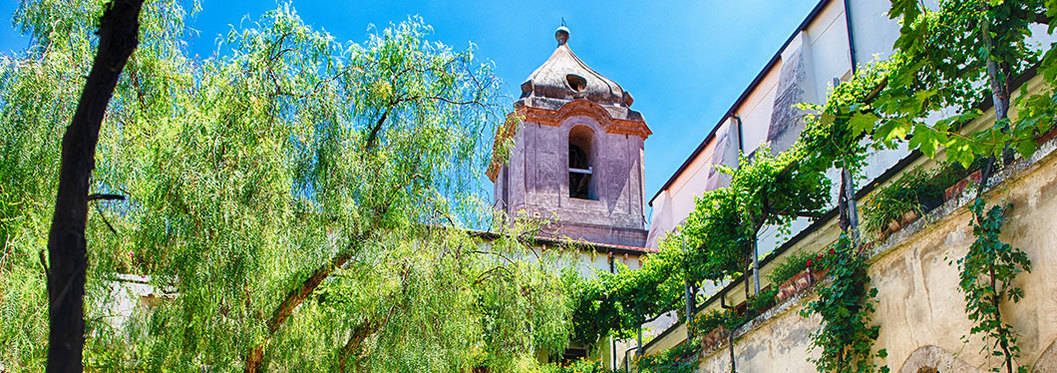
Cloister of San Francesco
The Cloister of San Francesco is right in the heart of Sorrento town, just a five-minute walk from Piazza Tasso and is located next to a 14th-century medieval church and a 7th-century monastery, both dedicated to St. Francis of Assisi.
The cloister, with its attractive Gothic arches surrounding a serene inner courtyard, was built at the same time as the church. It is an oasis of calm, with its tranquil bougainvillaea-filled gardens and luscious climbing plants, curling around the arched arcades, made of soft tufa stone and rubble.
In the summer months, the Cloister is extremely popular as a wedding venue, and it also hosts art exhibitions and musical events. During your travels, you may be lucky enough to find a pianist or violinist playing in the gardens; providing beautiful sound in the serene, calm and very lovely atmosphere of this historic courtyard.
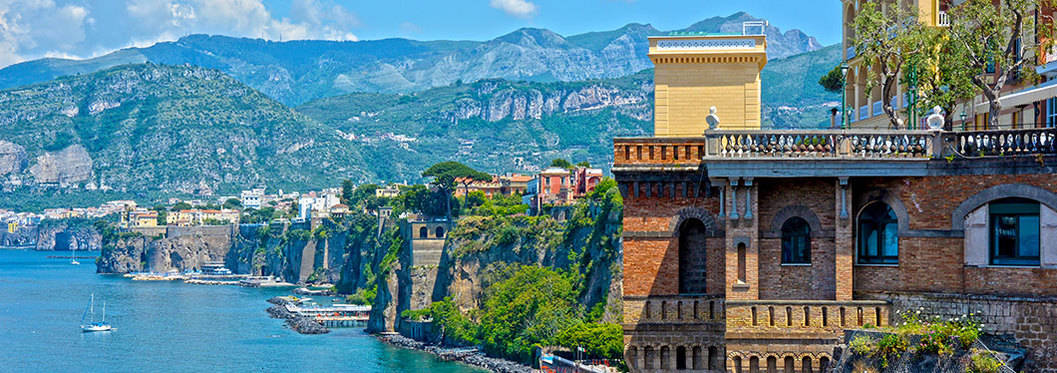
Isle of Capri
If you are holidaying in Sorrento, you shouldn’t miss the opportunity to visit the beautiful Isle of Capri. Ferries run frequently from April to October, but do get a little busier during the peak summer months, so it’s best to book in advance.
Once on the Island, there is so much to see and do, you could take a boat tour of the Blue Grotto, a dark underwater cave where the sea glows bright blue as the sun passes through. Or, maybe a hop on a chairlift ride to the top of Mount Solaro, with its beautiful views over the island. Then, visit the museum Villa San Michele, just steps from the chairlift departure point.
If you’re an avid shopper, then Capri is the place for you, with many shops here selling designer clothes, exquisite jewellery and beautifully handmade, leather sandals and bags. There are also many excellent restaurants, varying in tastes and price range.
Whatever you choose to do while on the island, you will definitely be awestruck by the magnificence of the steep cliffs, the magnificent scenery, a well as the opulence and beauty of the whole area.
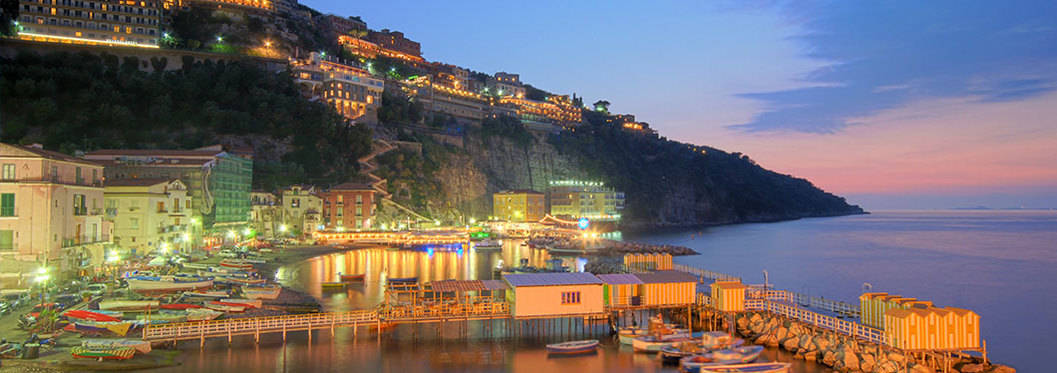
Marina Grande and Marina Piccola
Marina Grande and Marina Piccola are both located very near to each other, but are very different in character.
Marina Piccola is the larger, busier port, where hydrofoils and ferries in the Gulf of Naples depart from. Today, it is a major tourist attraction and most of the traditional structures have been replaced by more modern buildings. There is also a small public beach and lidos built on stilts, stretching out into the sea; being an ideal place to sit and watch the boats come and go.
The smaller of the two – Marina Grande, is sheltered by high cliffs on both sides; retaining its traditional fishing community charm. This picturesque village has the beautiful Church of St. Anne at its centre, surrounded by many of the original fishermen’s cottages and restored buildings, which now house restaurants and charming shops. The pace of life here is relaxed, differing to the vibrant atmosphere at Marina Piccola.
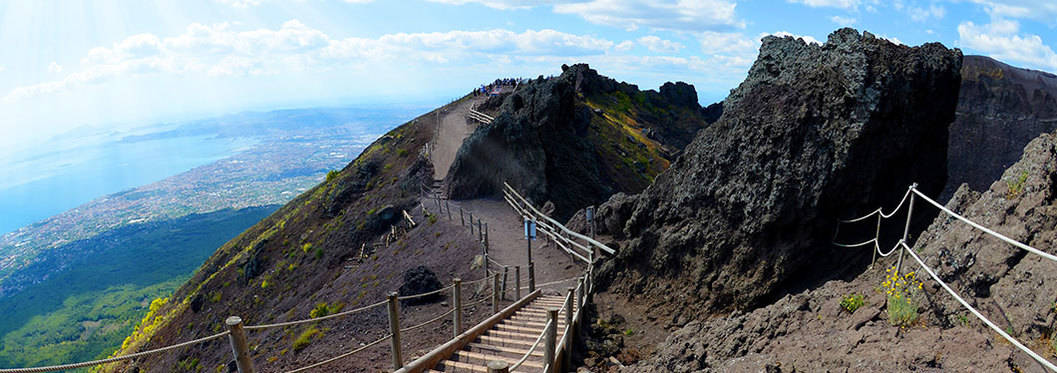
Mount Vesuvius
Mount Vesuvius sits in the crater of the ancient Somma volcano, overlooking the bay and city of Naples, being mainland Europe’s only active volcano. It is most famous for the 79AD eruption which buried the city of Pompeii and Herculaneum, now standing as a fascinating and interesting site in Campania.
The volcano last erupted in 1944 during World War II, when the ash and rocks from the eruption destroyed newly-arrived allied planes and forced evacuations at a nearby airbase. Today, it’s considered safe and tourists flock to hike up Mount Vesuvius, or stare into the depths of its volcanic crater, where they can see a stream of frozen lava and perhaps clouds of spiralling steam. The view of the Bay of Naples from the top of Mount Vesuvius is absolutely breathtaking, too.
It is worth noting that visitors will need plenty of water to drink during their travels over here, due to the difference in altitude. Warmer clothing is also required on a visit up Mount Vesuvius, as the air is much colder than below.
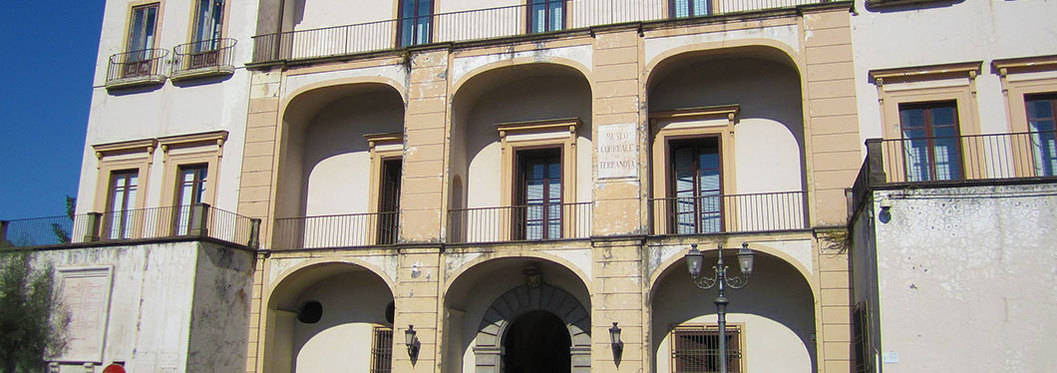
Museum Correale
The Museum Correale was originally the home of Correale family, a beautiful villa surrounded by a citrus grove and delightful, landscaped gardens. It was adapted as a museum upon the demise of the last family member, and today offers visitors the chance to take a journey back in time.
Image source: Wikimedia Commons. Copyright Gerd Fahrenhorst.
This wondrous museum houses a fine art collection, mostly from the 17th and 18th centuries, including pieces from Battistello, Van Dyck, Kassel and Belvedere, as well as landscapes from the famous Neapolitan school of Posillipov by Pitloo, Duclère, Gigante and Palizzi.
As well as the paintings, the four floors of the museum display Japanese, Chinese and European ceramics, furniture and caskets, inlaid with unusual and exotic woods. Not forgetting, the amazing collection of fine porcelain as well as precious glassware and rare clocks to see here.
When you do visit Museum Correale, ensure you allow time to wander around the gardens, with its display of rare plants and flowers, and of course, take in the amazing coastal views, too.
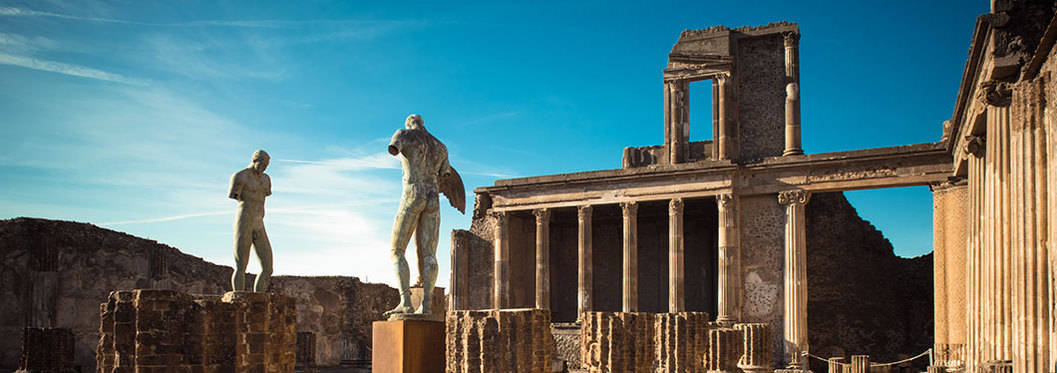
Pompeii
A visit to Pompeii is a must when holidaying in scenic Sorrento; providing a truly immersive experience and acting as the perfect spot for avid history lovers.
Travellers can take one of the many organised tours here, or if you want to make your own way over, hop on the Circumvesuviana train, which runs from Sorrento to Naples in just 20 minutes; then, you’ll arrive into beautiful Pompeii. Handily, the entrance to the archaeological site here is right opposite the train station, too.
Visit the Shrine of Our Lady of Pompeii, before exploring the well-preserved ruins, the Roman baths and not forgetting the nearby villas, decorated with frescos and mosaics, as well as the impressive amphitheatre. Or, imagine what life was like before Vesuvius erupted in 79AD; visit the Garden of the Fugitives, where you can see the casts of the victims of the eruptions, and the amazingly preserved details of their clothing and faces.
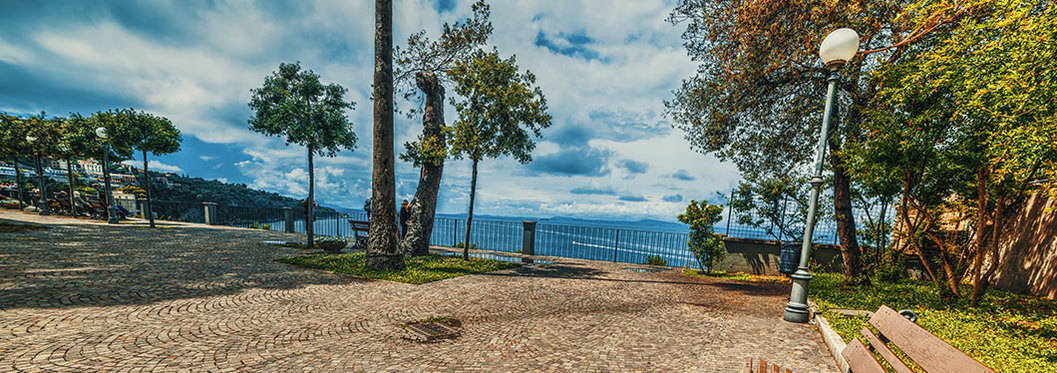
Villa Comunale
The Villa Comunale is the largest public park in Sorrento, sitting right at the top of magical cliffs which overlook the Bay of Naples. This park is famous not only for its exotic planting, gorgeous flowers and large palm trees but also for the amazing views it provides.
Visitors flock here with their cameras to photograph the seemingly never-ending coastal scenery, including the Marina Piccola, the Marina Grande and even Mount Vesuvius itself. Benches are strategically placed throughout the park for you to sit on, admire the gardens and the view and perhaps have a drink or an ice cream. There is also a small restaurant selling drinks and snacks, which also has toilet facilities for travellers to use.
There are steps and ramps leading up to the park from the marina, or if you don’t want to walk there is a lift for just one euro each way; it’s certainly well worth the cost.